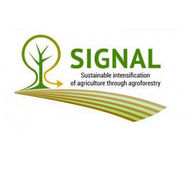Competition, stress and benefits: Trees and crops in the transition zone of a temperate short rotation alley cropping agroforestry system (2022.0)
Swieter A., Langhof M., Lamerre J.
Journal of Agronomy and Crop Science, 208 (2), 209-224
Abstract
Tree strips on agricultural production sites offer many economic, ecological and social advantages. However, the introduction of trees creates a transition zone between tree strips and crop land. Here, trees and crop plants compete for resources such as space, nutrients, water and light, which causes stress in the low-competitive system. On the other hand, facilitation such as additional nutrient input through tree leaf litter and fine roots are possible. This study aims to provide indications for competition and benefits that can arise for plants growing in the transition zone of a temperate short rotation alley cropping agroforestry system (SRACS). Various climatic and plant-growth parameters were investigated between 2013 and 2019 at different positions of an SRACS with fast-growing poplars in northern Germany. Reduced yield of wheat, oilseed rape and silage maize close to the tree strip was associated with greater soil water tension in 30 and 60 cm soil depth due to the presence of poplar roots, reduced solar radiation due to tree shading and leaf litter coverage. In contrast, poplars growing in the outer rows produced more biomass than those in the inner rows due to the additional availability of space, light and nutrients taken from the crop field. Trees in the transition zone seem to be competitive with arable crops, but without effect on the average long-term yield of arable crops.
